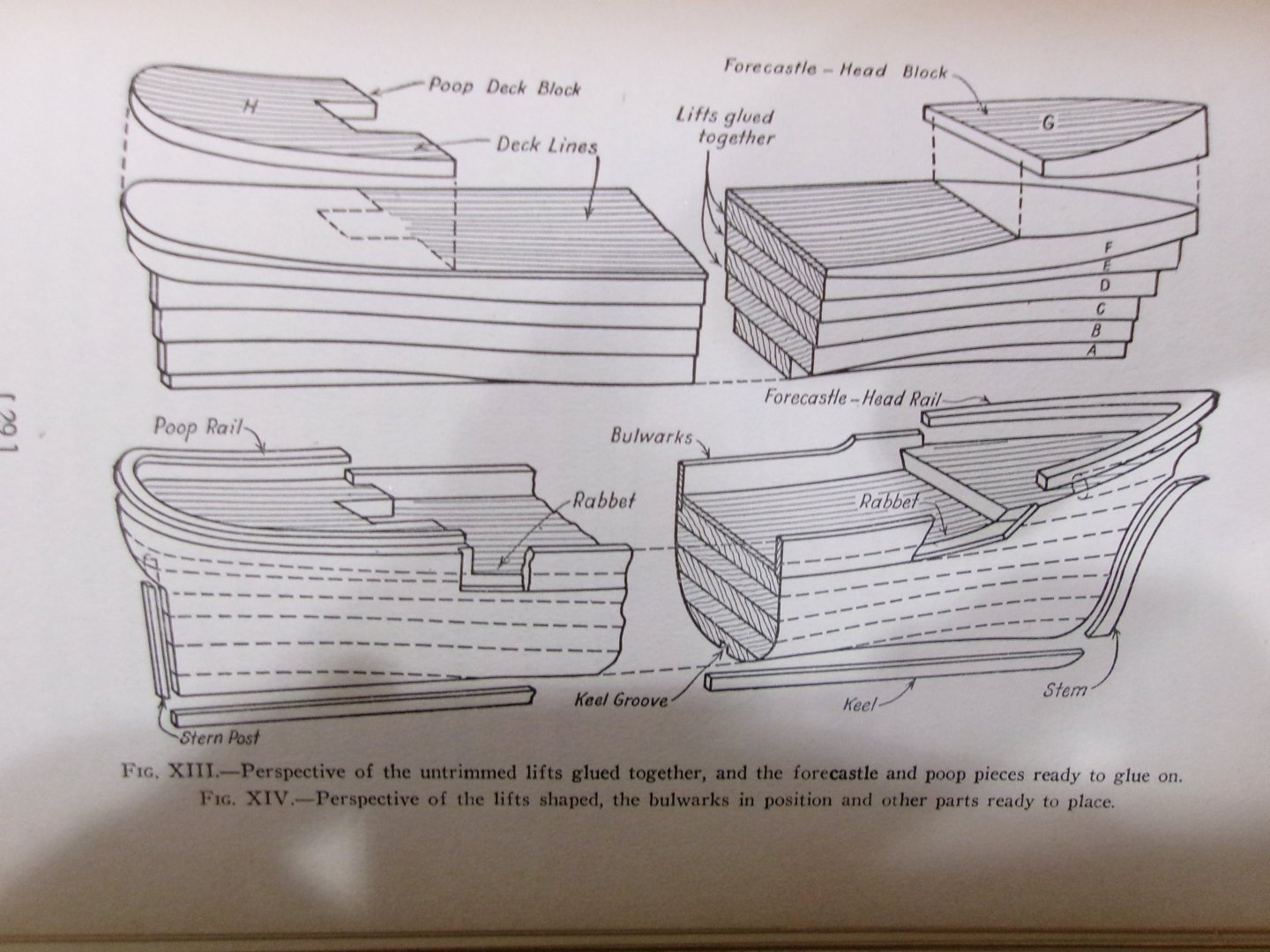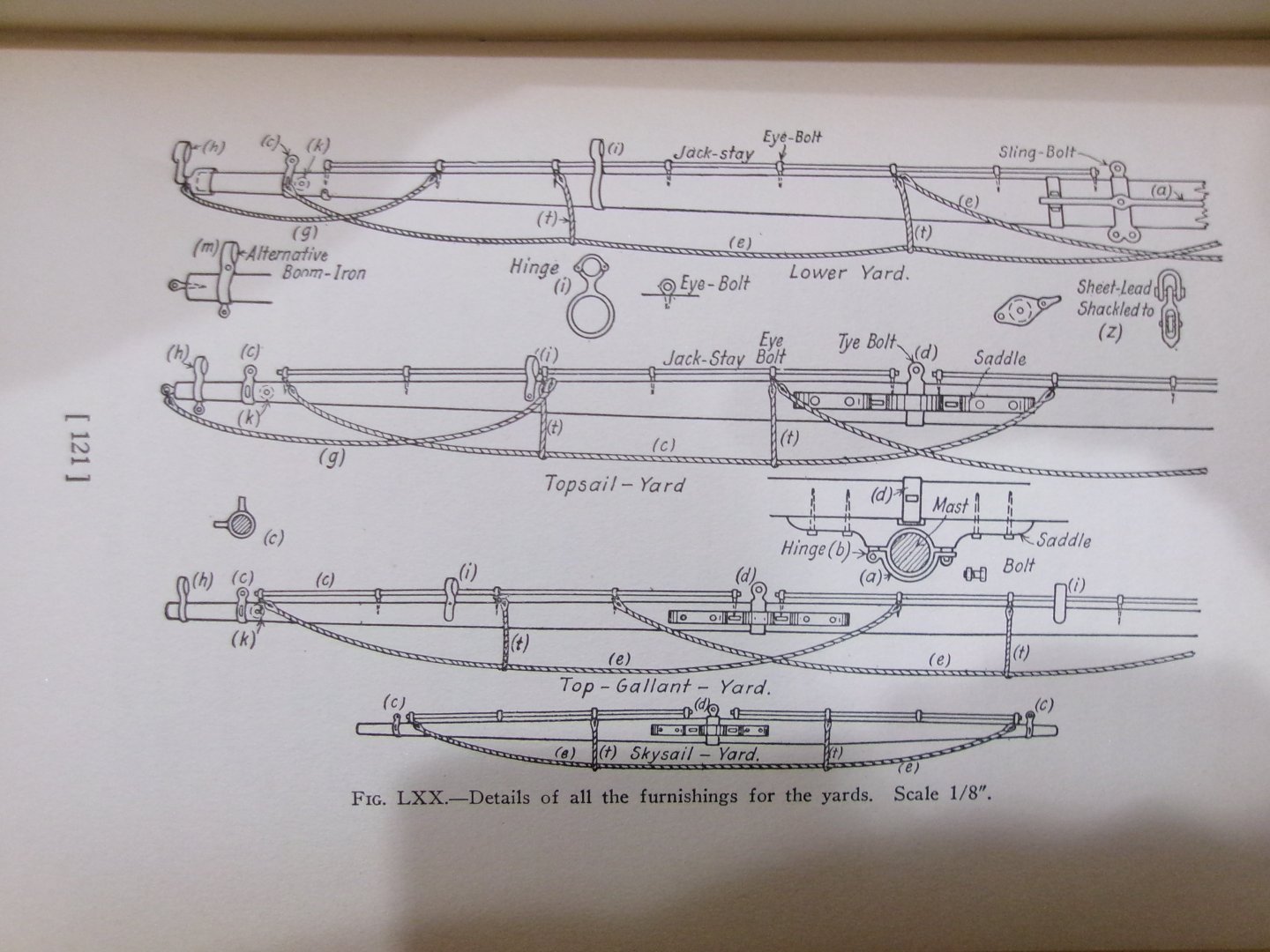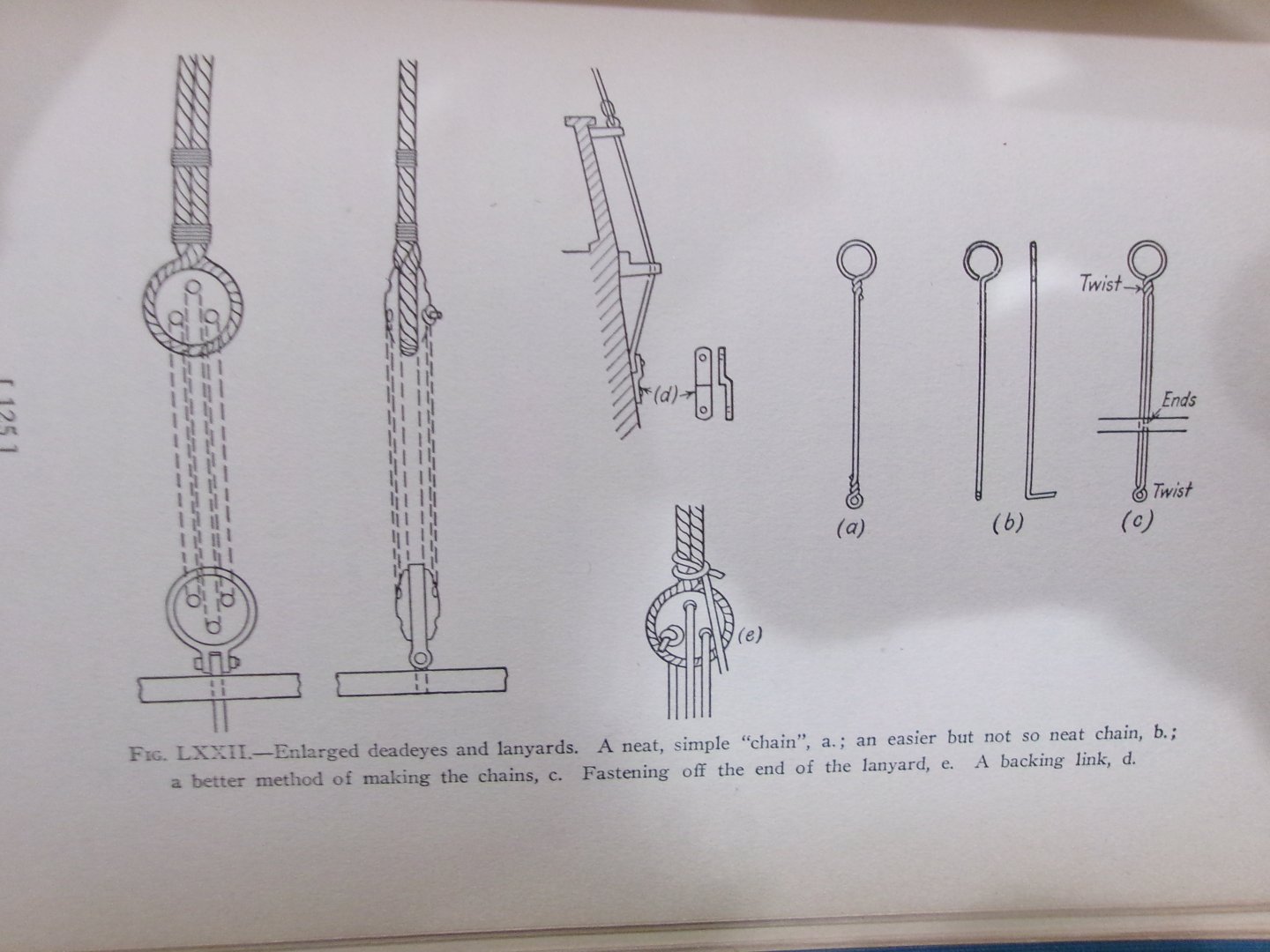-
Posts
1,481 -
Joined
-
Last visited
About Snug Harbor Johnny

Profile Information
-
Gender
Male
-
Location
Southeastern Pennsylvania
-
Interests
history, craft projects
Recent Profile Visitors
The recent visitors block is disabled and is not being shown to other users.
-
 Knocklouder reacted to a post in a topic:
Evening all.
Knocklouder reacted to a post in a topic:
Evening all.
-
 tmj reacted to a post in a topic:
Recommended First Machine
tmj reacted to a post in a topic:
Recommended First Machine
-
 AJohnson reacted to a post in a topic:
Evening all.
AJohnson reacted to a post in a topic:
Evening all.
-
 Keith Black reacted to a post in a topic:
Evening all.
Keith Black reacted to a post in a topic:
Evening all.
-
Welcome aboard , mate ! You can get a lot of tips and work-arounds on that kit from the existing logs found in MSW. 'Always a good idea to see whats ahead before engagins 'all ahead full'. 'Lots to learn, so take your time.
-
 Canute reacted to a post in a topic:
Recommended First Machine
Canute reacted to a post in a topic:
Recommended First Machine
-
 Snug Harbor Johnny reacted to a post in a topic:
USS Bagley (DD-386) by catopower - 1/200 - Avangard - CARD
Snug Harbor Johnny reacted to a post in a topic:
USS Bagley (DD-386) by catopower - 1/200 - Avangard - CARD
-
 thibaultron reacted to a post in a topic:
Which is the oldest book on shipmodelling?
thibaultron reacted to a post in a topic:
Which is the oldest book on shipmodelling?
-
 GrandpaPhil reacted to a post in a topic:
Which is the oldest book on shipmodelling?
GrandpaPhil reacted to a post in a topic:
Which is the oldest book on shipmodelling?
-
 Harvey Golden reacted to a post in a topic:
Which is the oldest book on shipmodelling?
Harvey Golden reacted to a post in a topic:
Which is the oldest book on shipmodelling?
-
 Kenchington reacted to a post in a topic:
Which is the oldest book on shipmodelling?
Kenchington reacted to a post in a topic:
Which is the oldest book on shipmodelling?
-
 PeteCo reacted to a post in a topic:
Shrouds and Ratlines
PeteCo reacted to a post in a topic:
Shrouds and Ratlines
-
Good to start a new thread than to load up another log ... and I'm wondering if the title of the new one should be tweaked a little - rather than to search for the 'oldest' ship modeling book, maybe it could be a review of any pre-1950 'how-to' book (just a thought). Regardless, I just received an original 1926 copy of Ship Model Making (vol. 2 on the clipper Sovereign of the Seas) - a famous McKay ship) by E. Armitage McCann (through Abe Books on Amazon). I'm impressed at the amount of useful information in this book - not just for the 'scratch' builder it was intended for, but also for those getting into (or renewing) an interest in model shipbuilding today - with the advantages of the latest in ship kit technology. There a lot of 'nuts and bolts' talk about how to go about model ship making (for a clipper, at least, in this book - but transferrable as well) - including nautical terms and many illustrations/diagrams. A weakness may be a shortage of 'detailed' wood modeling techniques to actually craft many of the features illustrated ... but this was in 1926 when many 'handyman' skills were common (and expected) of boys and men. There are reasonable simplifications in the rigging, and a fairly clear layout (in comparison, the Cutty Sark rigging in the Airfix scale series of books can drive a modeler nuts, without a great deal of studying/interpretation and jumping around). There is a concise history of the subject ship herself, and a pair (checked in advance on my copy) of large folded plans in a pocket in the back hard cover ... very nice. Due to the date of printing, the paper is increasingly fragile due to the acid content of early 20th century publications - so care in handling is needed. There are Dover re-prints of this book (less the large plans ... 'not sure if they include reduced versions) ... but possibly subject to 'later' copyright of the Dover edition - an 'ah-ha' moment, as the 1926 book IS now in the public domain. Thus it can be copied by any means and used at will ! So I'll add just a few of the 1926 book illustrations as samples: I LOVE the 'layer cake' method of roughing a solid hull - its one I have done successfully myself not long ago on Thermopylae, although I found carving easier with more layers - and the thickness of the layers becomes thinner towards the keel area.
-

New To Model Ship Building
Snug Harbor Johnny replied to MaxnCookie's topic in New member Introductions
Greetings, mate ! You should have fun perusing all the great build logs on MSW. -
 Snug Harbor Johnny reacted to a post in a topic:
Rigging scale for 1/85 Frigate
Snug Harbor Johnny reacted to a post in a topic:
Rigging scale for 1/85 Frigate
-
 Snug Harbor Johnny reacted to a post in a topic:
Oops -- Repairing broken bowsprit on Cutty Sark
Snug Harbor Johnny reacted to a post in a topic:
Oops -- Repairing broken bowsprit on Cutty Sark
-
'So sorry about the mishap, but it seems an Achilles Heel of the Revel Cutty (and Thermie) is the dolphin striker and the Cathead extensions ... and even the bowsprit itself. Well, to be fair, ship models are by nature somewhat delicate - and many things can get broken (like if you drop it). In the photos below, I put a piece of brass tubing (after squeezing into an oval shape when seen from the end, since the void in the Revell bowsprit is not fully cylindrical) into the bowsprit as reinforcement (some just glue in sprue to do the same thing). I decided to make a jib out of wood (scrounged from a 'parts kit') because the wood is far less flexible than the plastic one in the kit (but still breakable). The best thing I thought of for the dolphin striker was to cut one out of brass sheet with a jeweler's coping saw ... 'outside the line' for a rough cut, but easily filed before fully cutoff - then the bottom twisted 90 degrees. The plastic bowsprit end was drilled deeper to accept the brass striker. A few other fittings were cut out for the jib, and I'm OK with the result. I'll do something similar for the cathead extensions.
-

Recommended First Machine
Snug Harbor Johnny replied to vvvjames's topic in Modeling tools and Workshop Equipment
Don't forget a jigsaw ... and you don't need an expensive one. Mine is a handed-down Dremel mini jigsaw. Its noisy, but does the job cutting out small parts. -

Help to assemble AMATI chain plate 4090/05
Snug Harbor Johnny replied to Johnny Mike's topic in Masting, rigging and sails
If you haven't tried annealing, then you haven't "tried everything". Annealing the brass 'ears' should work, just as marksmen in the North-South Skirmish Assn. (N-SSA ... I was a member for 30 years) firing repro brass cases for Henry Rifles or Spencer and Burnside Carbines experience work hardening around the rim (or formed shoulder of the Henry) cartridge after crimping and subsequent firing on a target range. Each case was stood-up in a pan of water (dimmed lights in the shop), then the case mouth was heated with a propane torch just until the slightest glow was seen from the metal, then the case was tipped into the water to quench. Actually the quenching was not needed to anneal, since mere heating to 750 degrees F accomplishes that, but temperature is hard to judge - so the metal will just start to glow orangey around 800 - 850 degrees degrees F. Quenching prevents overheating the brass, which can change the composition of the alloy by burning off some of the zinc. You can easily anneal the ear end of the chainplate with a candle flame ... Hold the long end of the chainplate with needle nosed pliers, hold the ear end in the yellow of the candle flame (near the end of the flame) until you see the brass start to glow (dimmed lights makes observation easier). Then immediately quench the hot end of the chainplate in water, dipping the entire piece into, say, a glass of water while still holding with the pliers. The 'Bob's your Uncle', you should be able to bend the ears open enough to insert the wire ends of the enclosed deadeye into the holes in the ears - then bend them back and they should not break. Only bend once, as this process work-hardens the brass. -

Should i get the constructo hms victory
Snug Harbor Johnny replied to Nickk's topic in Wood ship model kits
Another thought ... There have been many builds of certain ships such as HMS Victory, USS Constitution, Cutty Sark, etc. These are well trod paths, and I'd likely be more interested in building a project done less frequently - if only for the relative novelty. The tips and techniques found in MSW builds are largely transferrable, at least to other ships near the period of the build examined. -
 Snug Harbor Johnny reacted to a post in a topic:
Bluenose II by bnw - Artesania Latina - 1:75
Snug Harbor Johnny reacted to a post in a topic:
Bluenose II by bnw - Artesania Latina - 1:75
-

Should i get the constructo hms victory
Snug Harbor Johnny replied to Nickk's topic in Wood ship model kits
Ahoy, mate ! You don't say if this will be your first ship model, or if you have prior experience. If the former, a Victory may not be the best place to start. I think there is a MSW topic on good "first models" to consider. I didn't find a review of that kit on MSW, but there was one unboxing and one review on you tube. Per an A.I. summary of my query on your primary question: The Constructo HMS Victory kit is a large, budget-friendly option, praised for its size and decent wood quality but heavily criticized for its poor, basic instructions, often requiring experienced modelers to supplement with other guides or kits for better detail, making it a mixed bag for those seeking accuracy and ease, though it can build into a nice display piece with significant effort. Pros: Large Scale: A big kit (around 1:94 scale, over 3.5 feet long) offering a substantial build. Good Value: Generally considered a great price for the size and wood included. Decent Materials: Wood quality is often good, with nice grain, though some pressed wood parts exist. Potential for Detail: With extra effort, it can become a good-looking model, especially the framed hull. Cons: Terrible Instructions: The biggest drawback; described as inadequate, basic, and among the worst in the industry, earning a low score. Lacks Accuracy/Detail: Compared to higher-end kits (like Caldercraft), it's simpler and less detailed, with features like deck camber often ignored. Advanced Project: Despite its simplicity in some areas, the lack of clear guidance makes it challenging, requiring an experienced builder. From the unboxing, there are some wood parts not laser cut, and you have to cut them yourselves. Other wood parts are 'pressed' (diecut?) but may take care in getting loose. The bulkheads appear to be laser cut. There are a number of plastic fittings, but also brass ones. There have been "simplifications" in the detail, so in the photo below from a reviewer (who said he found the kit difficult ... but persevered) it has the appearance of a better grade commercial pre-built model one can find for sale. But if the price is right, who knows what can be done with some effort. -
 Snug Harbor Johnny reacted to a post in a topic:
USS Bagley (DD-386) by catopower - 1/200 - Avangard - CARD
Snug Harbor Johnny reacted to a post in a topic:
USS Bagley (DD-386) by catopower - 1/200 - Avangard - CARD
-
'Love the way its coming together ! 'Looks like the wood fillers in the hull voids makes for both a sturdier model - and one with less kinks or dimples in the hull. I'm watching with great interest. Thanks, mate ! Johnny
-
 Snug Harbor Johnny reacted to a post in a topic:
USS Bagley (DD-386) by catopower - 1/200 - Avangard - CARD
Snug Harbor Johnny reacted to a post in a topic:
USS Bagley (DD-386) by catopower - 1/200 - Avangard - CARD
-

Revell 1:96 Cutty Sark after-market decals?
Snug Harbor Johnny replied to Terry Lawson's topic in Plastic model kits
I found that a thin coat PVA (polyvinyl acetate) bonded the wood veneer deck to the plastic beneath. The glue was applied to the plastic, allowed to get more tacky, then the wood put on top and pressed around with fingers. Then some cloth put over the wood, then a plank and some weight to evenly clamp. -
Your ropewalk is setup with a 'top' (juggernaut) that runs itself up to the geared end as the rope is made - similar to a full-size rope walk, but constrained by the side line guides. A large version I used to use at craft demos had a swivel on the far end to relieve excess counter-twist, while other versions use a crank. Whatever way, the product comes out about the same. After using Chuck's Rope Rocket (judging the amount of twist by 'feel' and distance each end moves on the two-step process), the scale rope length is 'whipped' by hand to normalize any twist imbalance (that removes any kinks), then I'll step on one end and pull out the rope in sections to stretch it out ... this 'sets' the rope pretty good. I use poly thread for permanency, so it is heat treated on a cookie sheet for 5 minutes in a 320 degree F oven. Cotton doesn't need this if stretched with moistened fingers. Old models rigged in just plain cotton thread can have deterioration, but laid scale rope of cotton should last longer ... but many (like me) are betting on poly for the long run. Linen rigging - like the old fly fishing line used by old timers - holds up very well, just as fine linen sails have done.
-
Ahoy, mate ! I once saw a private sailing ship out of Annapolis name 'Despot's Heel' ... Those who have lived in Maryland will get it.
-
"hope you have smooth sailing this time around, mate !
-
 Snug Harbor Johnny reacted to a post in a topic:
Shrouds and Ratlines
Snug Harbor Johnny reacted to a post in a topic:
Shrouds and Ratlines
-
The build of the USS Tennessee used the sewing method to put ratlines through the shroud lines, then before tying cow hitches on the outer shrouds, the builder pressed each gap with a tool to put in a little droop to the ratline ... not much, mind you. If I remember correctly, dilute PVA glue was used to 'freeze' everything in place.
-

Revell 1:96 Cutty Sark after-market decals?
Snug Harbor Johnny replied to Terry Lawson's topic in Plastic model kits
There is a supplier in Eastern Europe (Czech, I think) who runs H.I.S. Models (hismodel.com) , and he has a set of photo etched decorations on thin brass for both the Revell Cutty Sark and the Thermopylae. I ordered the set for the latter - along with the wooden deck in beech veneer (oak has a heavy grain that looks out of scale) that I found on EBay - so I ordered through Ebay. You can check if he still lists the items there if you prefer. H.I.S. does accept credit cards now (they didn't s few years ago when I bought the items, and thats why I went through EBay). The decoration set (quoted in euros) is about $25 USD, and shipping should not be too much ... but I have no idea what the tariff situation with that country is now. You can always contact by e-mail, and find out. The photo etching is delicate, but handled carefully and glued (presumably with CA) it has looked very nice on photos of those who have applied them. (I'm dragging my feet on Thermie, since I've done a second hull with authentic lines - not those of CS used in the Revell Thermie kit - in basswood at 1:110, but will used many of the 1:96 parts anyway.) The wood deck made for the CS kit is more pricy (something like $75 USD), but very nice. I inlet sections of the plastic deck into the basswood Thermopylae hull to serve as mast bases and also for the hatches and the deck equipment, then I used PVA glue to bond sections of the deck veneer to the entire deck. This involved (for my case) in cutting-and -pasting the oversized 1:96 deck to the 1:110 area. For the Revell kit, none of that is needed.
About us
Modelshipworld - Advancing Ship Modeling through Research
SSL Secured
Your security is important for us so this Website is SSL-Secured
NRG Mailing Address
Nautical Research Guild
237 South Lincoln Street
Westmont IL, 60559-1917
Model Ship World ® and the MSW logo are Registered Trademarks, and belong to the Nautical Research Guild (United States Patent and Trademark Office: No. 6,929,264 & No. 6,929,274, registered Dec. 20, 2022)
Helpful Links
About the NRG
If you enjoy building ship models that are historically accurate as well as beautiful, then The Nautical Research Guild (NRG) is just right for you.
The Guild is a non-profit educational organization whose mission is to “Advance Ship Modeling Through Research”. We provide support to our members in their efforts to raise the quality of their model ships.
The Nautical Research Guild has published our world-renowned quarterly magazine, The Nautical Research Journal, since 1955. The pages of the Journal are full of articles by accomplished ship modelers who show you how they create those exquisite details on their models, and by maritime historians who show you the correct details to build. The Journal is available in both print and digital editions. Go to the NRG web site (www.thenrg.org) to download a complimentary digital copy of the Journal. The NRG also publishes plan sets, books and compilations of back issues of the Journal and the former Ships in Scale and Model Ship Builder magazines.
















